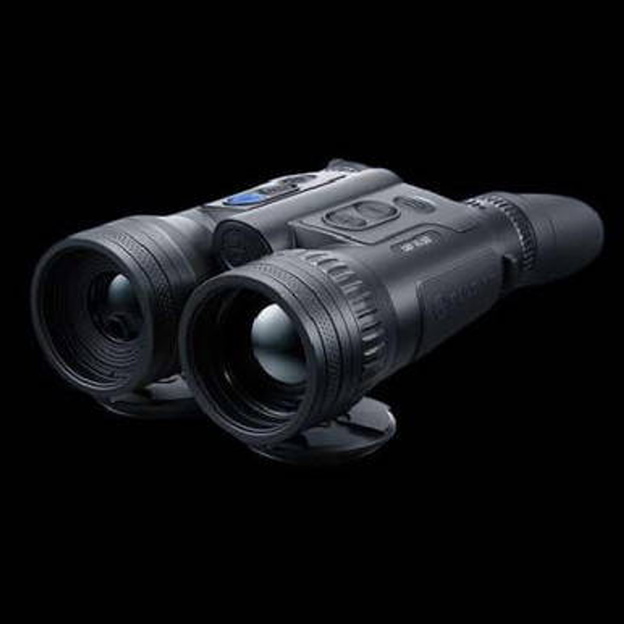There are nearly as many different types of thermal optics as conventional glass optics out there, and like standard optics, there are numerous use cases for each type of thermal optic.
This post will break out four of the main types of thermal optics, which are monoculars, binoculars, thermal rifle scopes, and clip-ons, as well as their best use cases.
Thermal Monoculars

Thermal monoculars are basically handheld thermal rifle scopes without the reticle. Like all other types of thermal optics, they have a thermal sensor and eyepiece as well as a display. They can be used as handheld scanners, for scouting, for tracking wounded animals, for search and rescue, reconnaissance, security surveillance, and more.
Thermal monoculars are often a prime choice when you don’t have a need to mount the optic to a firearm and make a shot, since they don’t always have ballistic calculators and generally lack a reticle. Therefore they are best for general observation and tracking than they are for making a shot. That said, they can be used in tandem with a thermal scope because many thermal monoculars have rangefinders.
The main selling point of a thermal monocular is, however, the smaller size and weight when compared to a pair of thermal binoculars. Since they have only one eyepiece and display, they’re much more compact and lighter and can generally be carried with less impact on the overall loadout than a pair of binoculars.
Another benefit of a thermal monocular as opposed to binoculars is that, since you only view through one eye, you can preserve your night vision in your other eye, avoiding some of the “night blindness” that occurs when using thermal optics.
Also, because they are smaller and less complex, they are generally more affordable than thermal binoculars, which can potentially make them a great option as an entry level thermal optic.
Thermal Binoculars

Thermal binoculars are functionally like thermal monoculars except you view through two eyepieces and displays instead of one. In all other respects they are very similar to monoculars.
Thermal binoculars, however, tend to be larger, heavier and more expensive, so the question becomes, what is the justification for this when a thermal monocular might suffice?
Ultimately, it has to do with the form factor of binoculars. Some nocturnal hunters find that, though binoculars might cause more night blindness, viewing through the single eyepiece of a monocular causes more eye strain, and is less ergonomic, overall, than naturally using both eyes, which a pair of binoculars will facilitate.
Otherwise, like thermal monoculars, binoculars can be used for scouting, scanning, tracking, general observation, and much more - anything a monocular can be used for, just with a different form factor.
Thermal Scopes
In addition to thermal monoculars and binoculars, we also have thermal rifle scopes that are intended to be mounted to a rifle’s rail and used to execute shots.
Thermal rifle scopes can be used for scouting or scanning when mounted to a rifle, but they are often equipped with rangefinders and ballistic calculators that will help you connect with a target.
Also, thermal scopes are equipped with reticles and can be zeroed just like conventional rifle scopes, although the sight picture will be digitally constructed from the thermal sensor instead of optically relayed via traditional lenses.
Thermal scopes also differ from thermal monoculars in that they are either equipped with or compatible with scope rings and bases so that they can be mounted over a rifle receiver.
Thermal Clip-Ons
There is another class of thermal optics known as clip-on thermal optics, which are among the most versatile and compact options of all.
Typically, clip-on thermal optics are smaller than the other types of optics mentioned here and are intended to be clipped onto the rail of a rifle in front of a scope so that the original scope can be used as a thermal optic. In essence, they can convert “regular” scopes to thermal scopes.
Clip-on thermal optics can also be detached from the rail and used as compact handheld thermal scanners, just like a monocular could be.
These are extremely versatile options and one of the best at your disposal if you like your current scope and don’t want to replace it. With the right adapter, you can use a clip-on thermal optic with a wide range of existing optics.
Explore Thermal Optics Here
Whether you’re here for a new thermal scope or are looking for a thermal monocular, clip-on or scanner, we have what you need and represent the top brands, including but not limited to PULSAR, RIX, Nocpix, InfiRay, and many others. Shop our collection and if you need help finding something or want a personalized recommendation based on your intended use,
contact Dark Night Outdoors at 309-781-8421.


